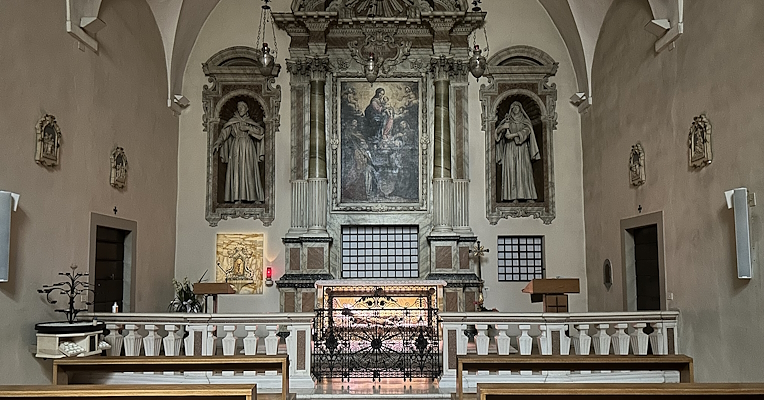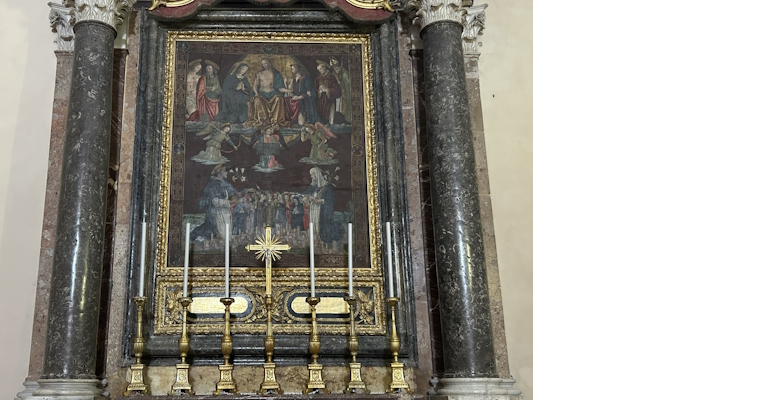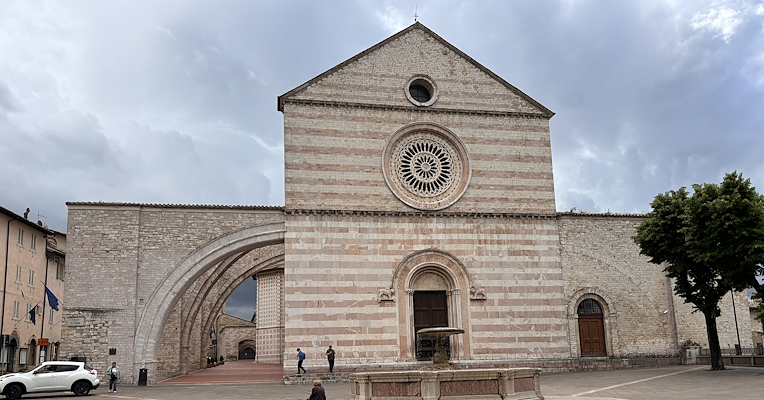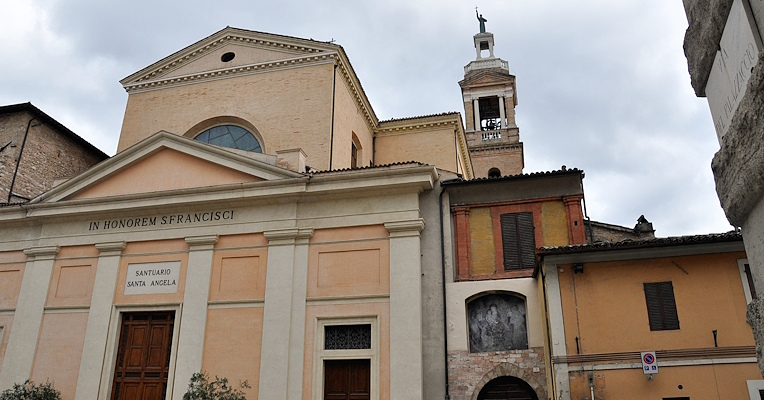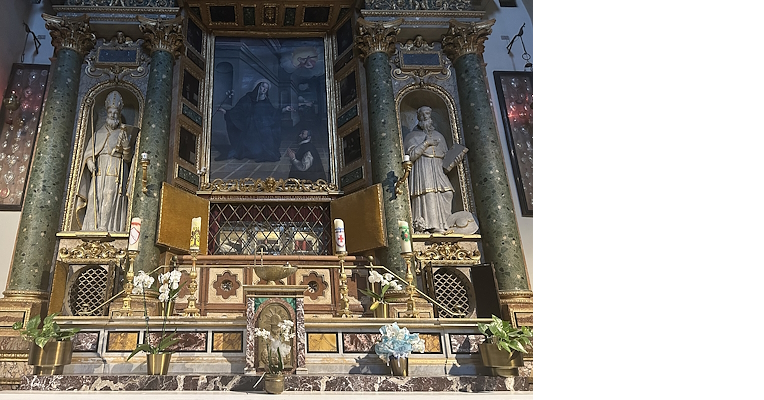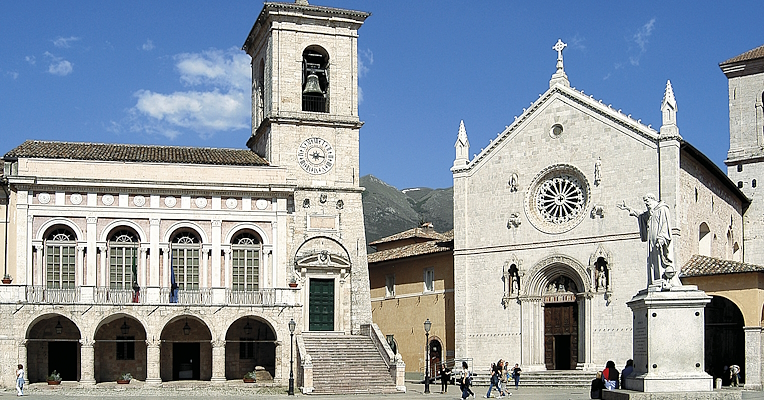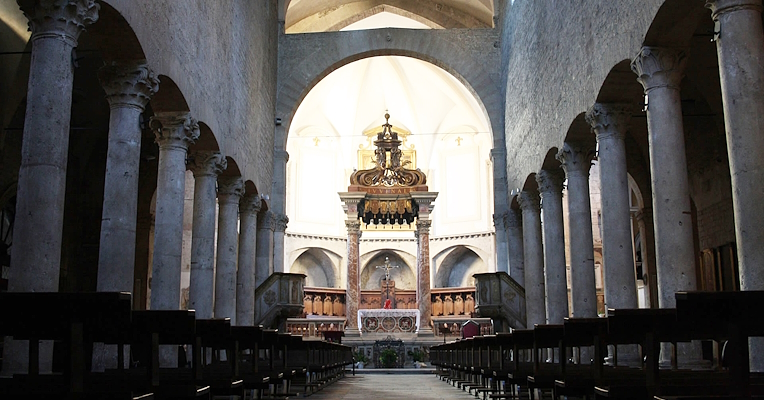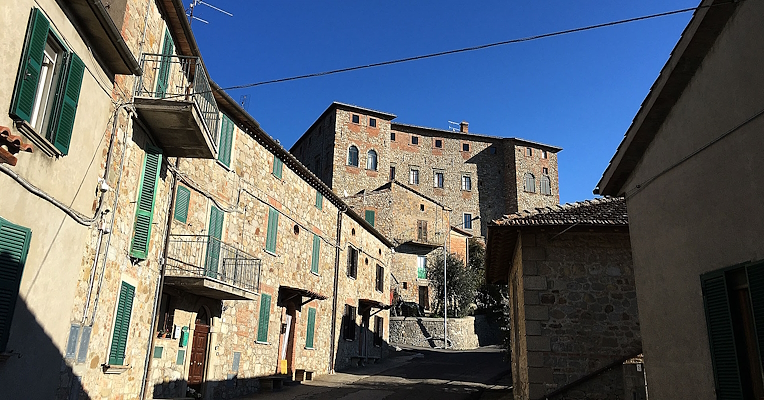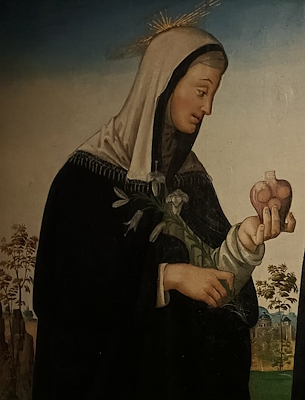Saint Rita
The hamlet of Roccaporena, in the municipality of Cascia, is closely tied to the life of Margherita Lotti (born in 1381), who would become Saint Rita, the “saint of impossible causes”.
The first miraculous event of her life occurred when Rita was still an infant: a swarm of bees covered her, landing on her lips without harming her. Though she wished for a life of prayer, her parents arranged her marriage to Paolo di Ferdinando Mancini, a violent and quarrelsome man, with whom she had two sons. Although her husband showed signs of repentance after their marriage, he was killed due to rancor and old grievances. According to custom, their sons were expected to avenge his death, but Saint Rita prayed that they would die rather than become murderers.
Thus, left alone, she decided to enter the Augustinian Monastery of Santa Maria Maddalena. For reasons unknown, her novitiate was refused three times until, around 1407, she was miraculously found inside the monastery walls and finally accepted. From that point on, she led a life of penance, prayer, and service to others.
On the evening of Good Friday, April 18, 1432, Rita is said to have received a thorn from Christ’s crown on her forehead, and from that moment on, she bore the stigmata until her death. In 1446, already gravely ill, she expressed a desire to travel to Rome for the canonization of Nicola da Tolentino, but the prioress forbade her to go due to the purulent wound on her forehead, which miraculously disappeared, only to reappear when Rita returned to the convent.
Her final miracle occurred in the winter before her death when, bedridden, she asked a cousin to bring her a rose and two figs from her garden. To her cousin’s amazement, a red rose had blossomed in the snow, a flower still associated with the saint today. Gravely ill, Rita passed away on the night of May 22, 1457. Canonized in 1900 by Pope Leo XIII, her mortal remains are venerated in the Basilica of Saint Rita, built between 1937 and 1947.
























